This past February, Canon announced the new EOS R8, taking a lot of what made the R6 Mark II a compelling camera, and bringing it into the body of the now four year old RP. The R8 is poised to actually replace the original Canon EOS R in Canon’s lineup, offering a high quality camera body at a more affordable price than the more professional grade R5 and R6 Mark II. Historically, Canon has been known to lay the ‘cripple hammer’ down on cameras that try to fill this niche, but in a very nice change of pace, Canon instead made the R8 a compact powerhouse of a camera.

Note: I review gear from a real-world shooting perspective, determining how a piece of gear handles for me in actual use. I also am not a videographer, so my camera reviews cover the still-imaging aspects of a camera.
Body and Ergonomics
The R8 shares the vast majority of its body with the earlier Canon EOS RP. While the top plates differ slightly with a more rounded EVF hump and a change to the On/Off switch location, everything below that is identical to the RP. The grip, the rear controls, the screen, the bottom of the camera and battery/SD card door are all the same as the RP.
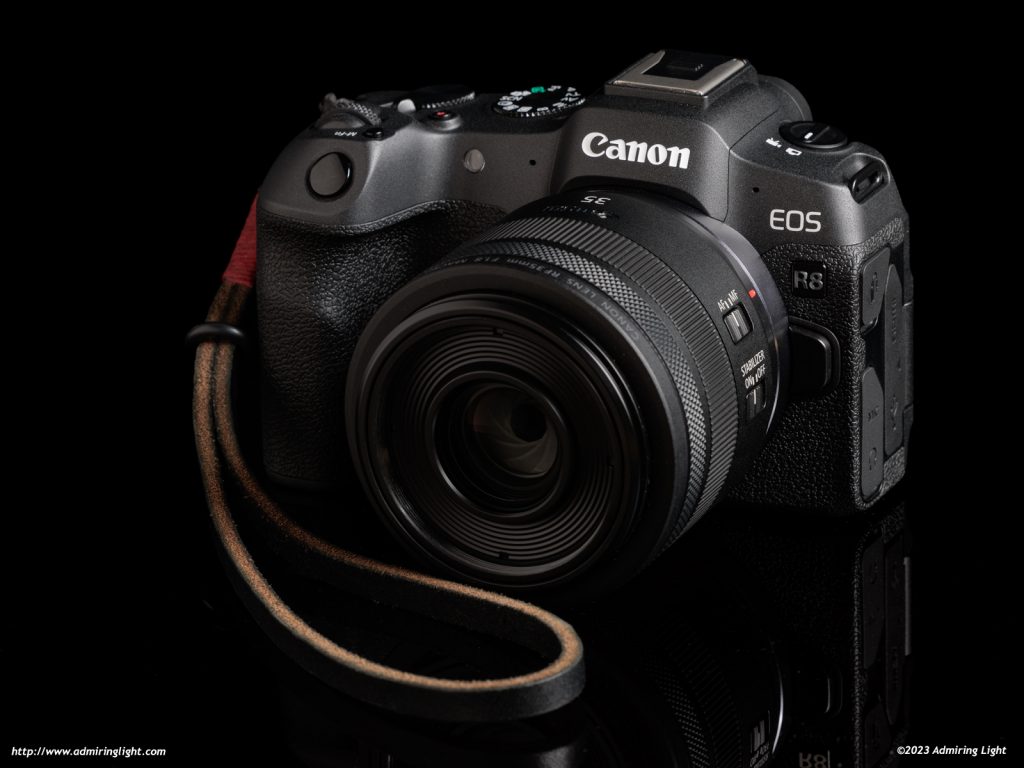
I think this is a great move by Canon for a few reasons. First, it allows Canon to re-use portions of the RP manufacturing line, thus lowering costs. Second, it maintains what was already an outstanding grip for a small camera. Third, it preserves compatibility with all of the RP’s accessories, including the EG-E1 extension grip, any arca-swiss camera plates, third party battery grips and so on.
The R8 is a very compact full-frame body, and is also exceptionally lightweight, coming in at a mere 460g with the battery installed. Despite the small size, the EOS R8’s ergonomics and comfort are outstanding. Many compact mirrorless cameras make serious sacrifices in handling and comfort for the size. The R8, however, is extremely comfortable to hold and controls are very well placed. Canon knows how to make comfortable grips, and the R8’s grip is truly excellent. While the bare camera is a little too short to allow your pinky to fit entirely, the grip is deep and well contoured. For added comfort, see the section below on the EG-E1 extension grip.
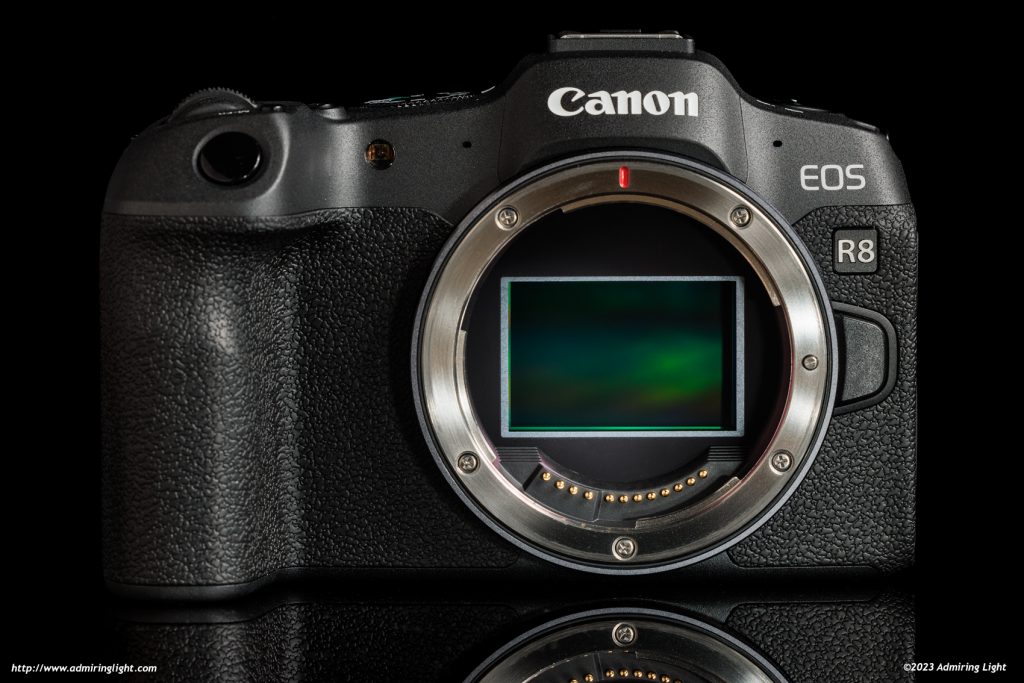
Perhaps most importantly, Canon has left tons of room between the grip and the lens mount, and as such the R8 has plenty of clearance between the grip and any lens you would care to mount on the body. Even with the very fat RF 85mm f/1.2L, the R8 has ample room between my fingers and the lens while I’m operating the camera. After dealing with Sony’s cramped fingers on such lenses with their cameras, this is simply wonderful in a small consumer-grade body.
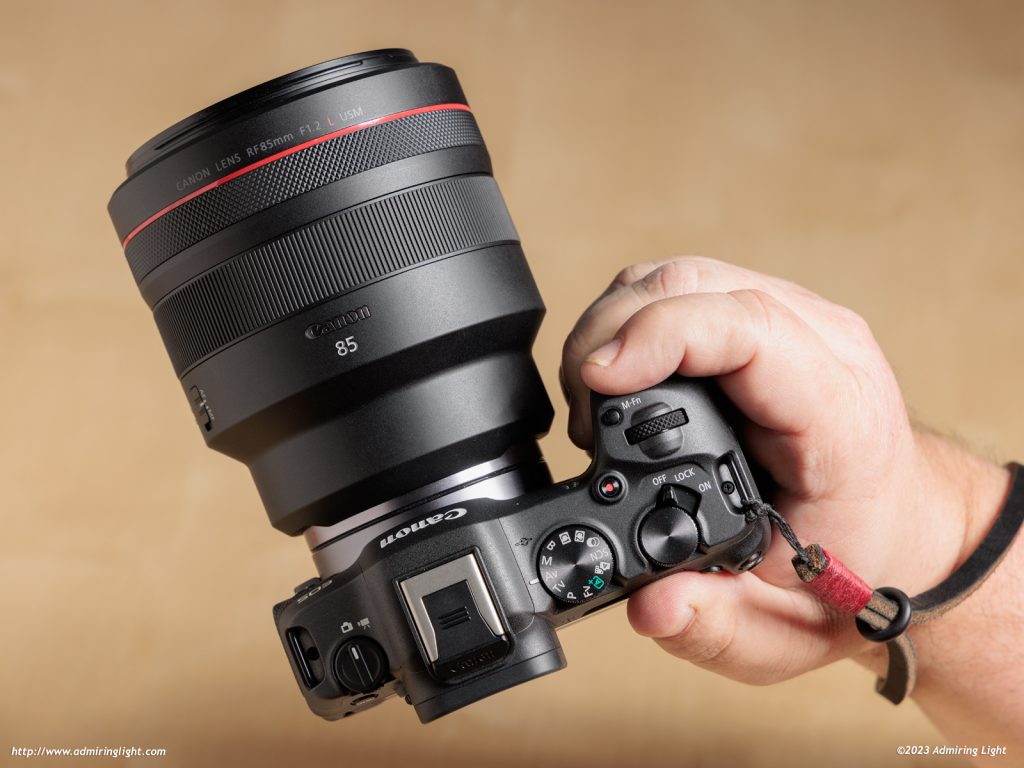
The overall construction of the camera is also on a high level for the price point. The camera is tightly assembled, with no creaks or flex anywhere, and feels very rigid even with heavy lenses. The body has some degree of weathersealing, but not quite to the level of the higher-end R6 II and R5 bodies. There’s no definitive measure given by Canon, but I think it would be safe to assume the R8 could handle some raindrops if caught unaware, but I wouldn’t be rushing out to spend the day in a downpour.
All of the ports located on the sides are sealed with rubber flaps that sit securely in their places. The dials and buttons operate with excellent tactility with a few exceptions, and feel great to use. The exceptions are the four way D-pad, which has rather shallow range of movement, and therefore lacks some positive tactility. The other is the On/Off switch, which operates with a nice crisp movement but is the only control on the camera that feels a bit cheap.
EG-E1 Extension Grip
The R8 handles very nicely for a small camera, but like the RP, the EG-E1 extension grip can be added for a bit more real estate to the bottom of the camera. The overall footprint is still very compact with the grip mounted, but the height of the camera increases so that it grows to be slightly taller than the R6 Mark II. In my opinion, the EG-E1 is one of the first accessories owners of the R8 should consider. While the R8 is comfortable to operate without the extension grip, it becomes an absolute joy to hold with it. The grip increases the leverage and control you have with the body, and makes shooting with heavier glass more comfortable.
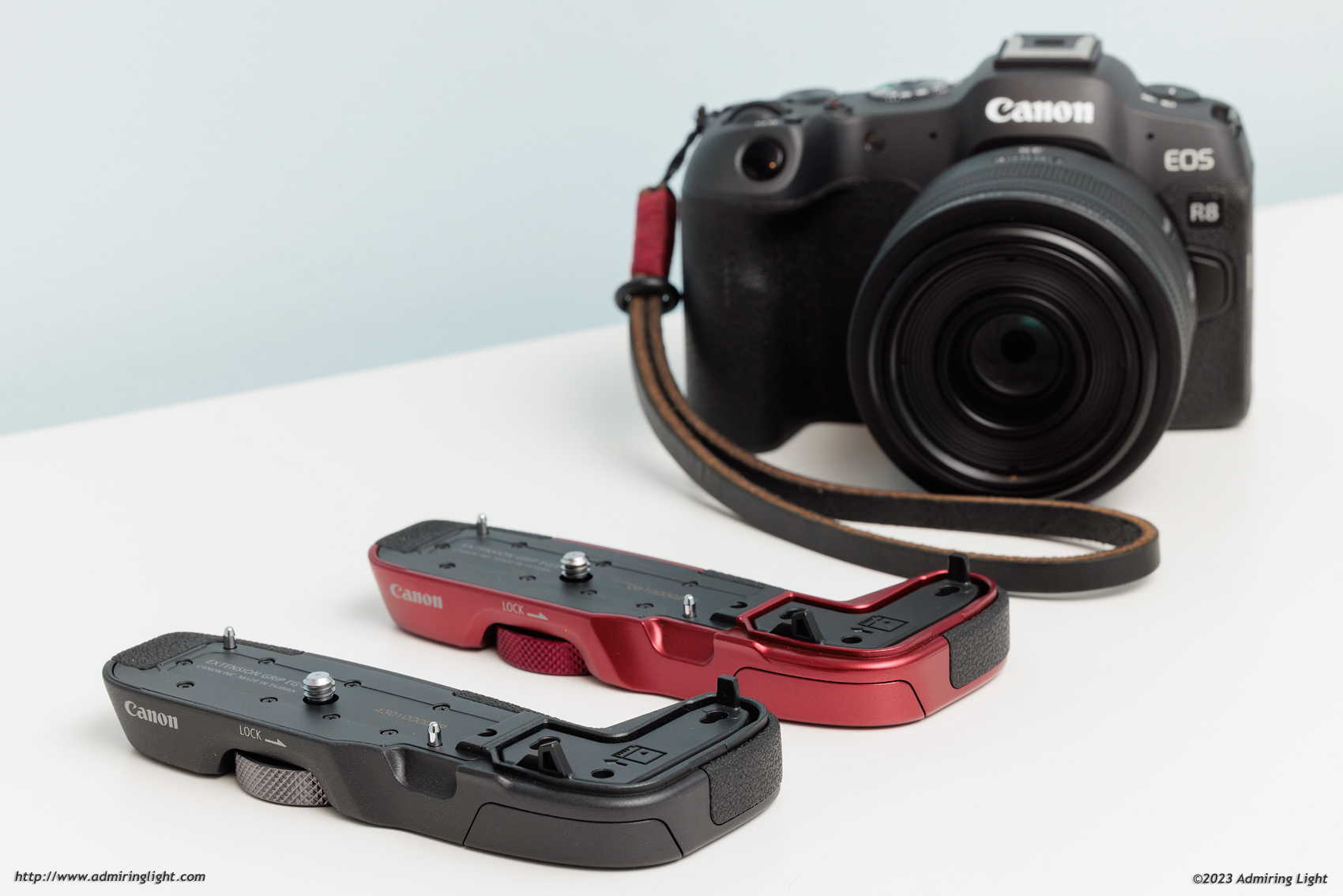
The EG-E1 is available in three colors. The black color has the same texture and finish as the bare camera, and so blends very well with the body in both looks and feel. The grip can also be had in either red or blue. Those colors have a smooth finish and give a nice pop of color to spice things up. I have owned the red grip since I first bought an RP several years ago, but added the black grip as well for when I use the R8 in a more professional setting. I like both.
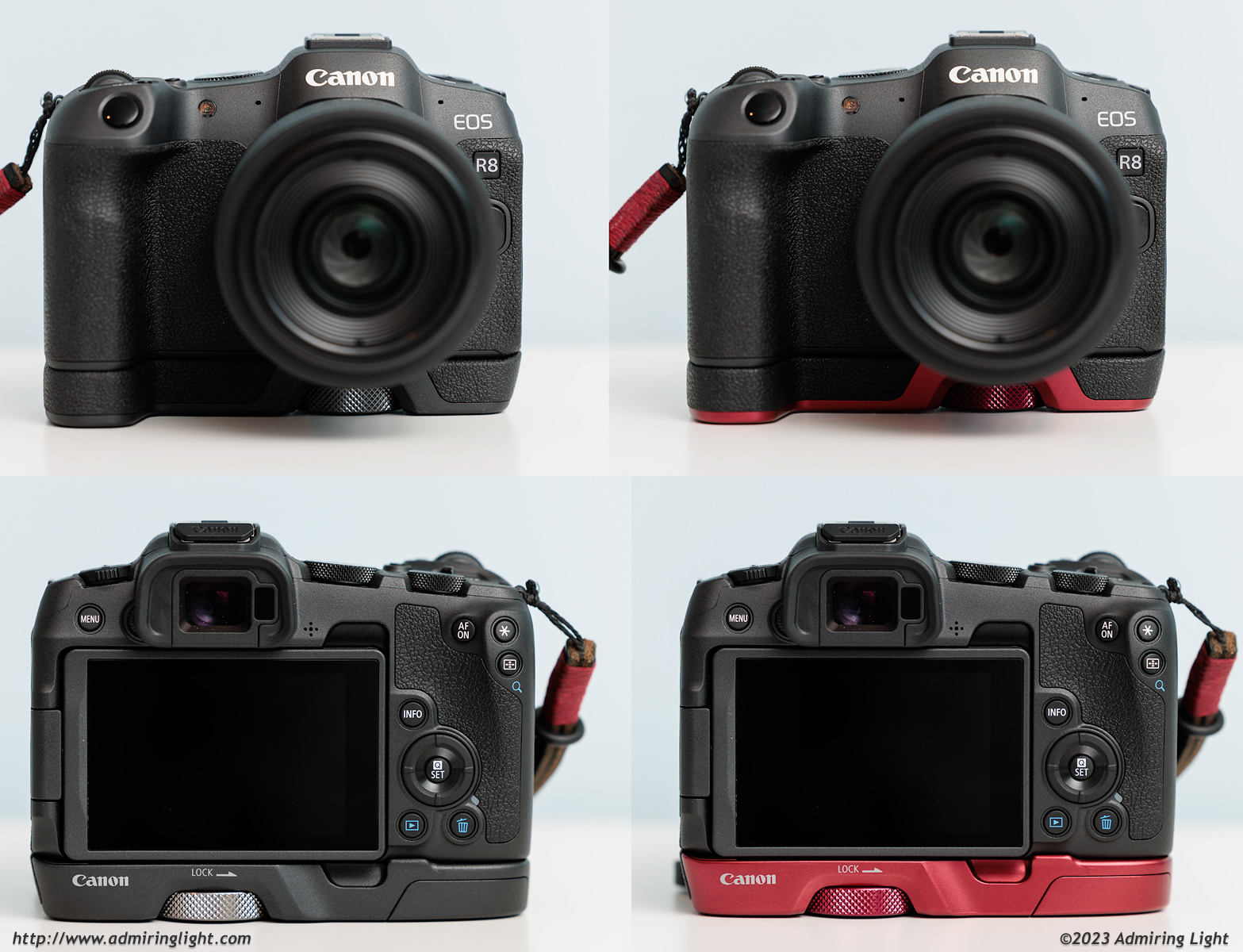
The grip mounts securely to the camera, and has an access door in the bottom so you can change batteries or remove the SD card without having to remove the grip. The door on the grip has a foam weather-sealing gasket around it, and the locking knob has a tripod socket in the bottom so plates or heads can be mounted directly to it. Overall, it’s a highly recommended accessory for the camera, especially if you have large hands.
Controls
As with the general body, the control points on the EOS R8 are largely identical to those of the RP that came before it. However, due to significantly expanded customization options, the overall control package is significantly improved from that camera.
The top of the camera is where the most notable changes have occurred. The R8’s top controls now precisely follow the top controls of the EOS R6 Mark II, with the familiar shutter button, front control dial, M-Fn button and video record button that all R series cameras feature. But also like the R6 Mark II, the R8 has moved the power switch from the left side of the camera to just in front of the top rear control dial. On the left side now sits a toggle switch for changing between stills and video shooting. This is a nice control to have, but it really makes the video record button somewhat redundant. Thankfully, that button is fully programmable, as are most of the buttons on the R8.
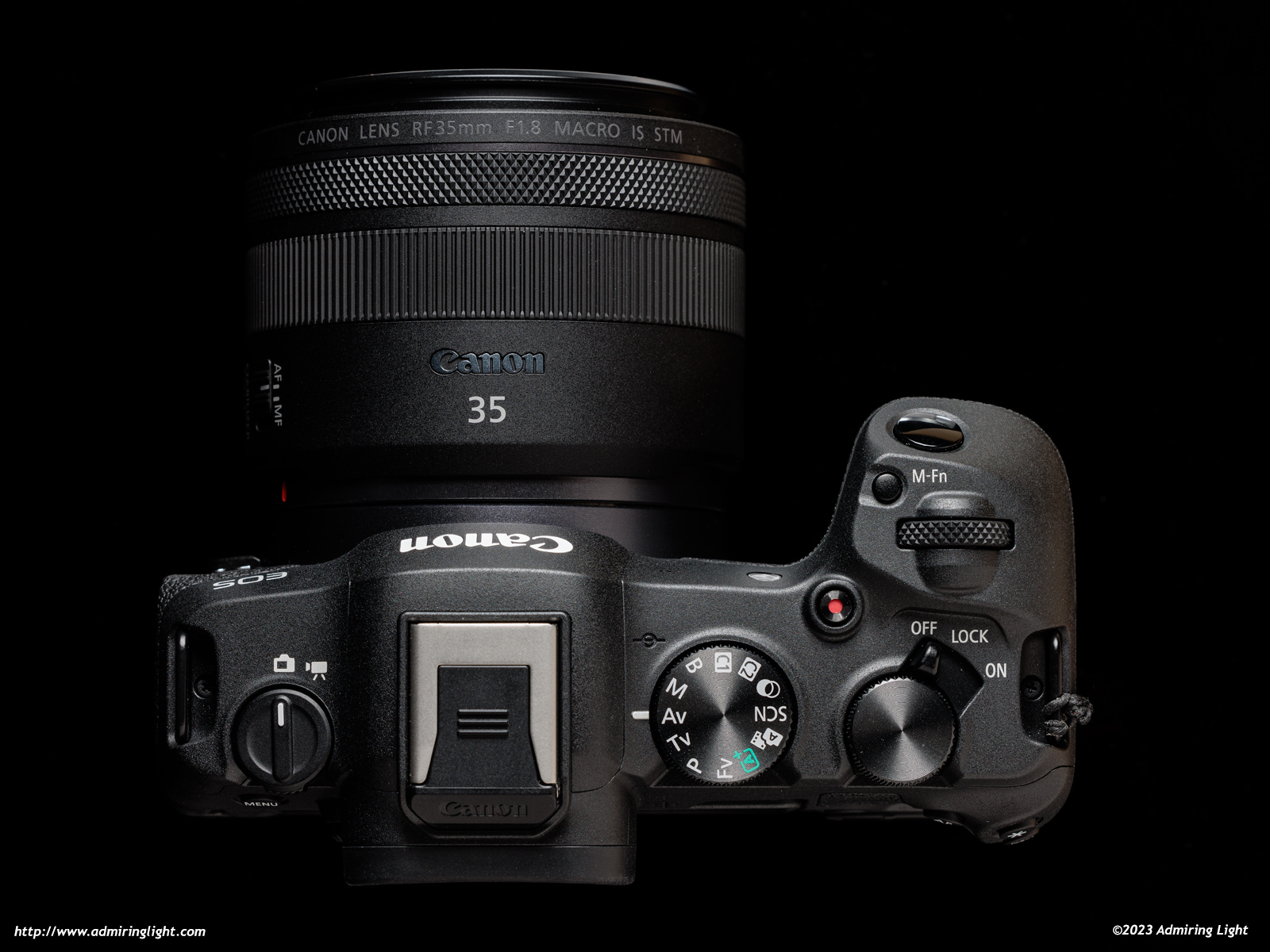
The R8 is controlled with a standard PASM dial, which has the usual exposure modes, plus Canon’s unique Fv mode, which is an on the fly autoexposure mode where you can set any or all exposure parameters to manual or auto. There is also a full auto mode, Canon’s consumer-facing scene modes, and two customizable modes, which can of course be programmed for specific scenarios in which you may find yourself. I have C1 set up with autofocus and drive settings ideal for shooting moving wildlife, while C2 is set-up for people event shooting. I do wish it had a C3 selection instead of the scene modes that I will never use. (On my R5, my C3 is set up for quick settings when using flash, such as turning off exposure preview).
The rear of the camera is identical to the EOS RP, with an AF-ON, AEL, focus point selection, Info, Q, Trash and Play buttons, along with a four way controller (D-pad). All of these buttons, save for the Q, play and trash buttons, can be fully customized. The AF On, AEL, M-Fn and movie record buttons can be set to one of 65 different functions, while the rest of the buttons can select any of 50 different functions for stills shooting. These buttons can also be set to different functions for both stills and video. The video options include 41 different functions.
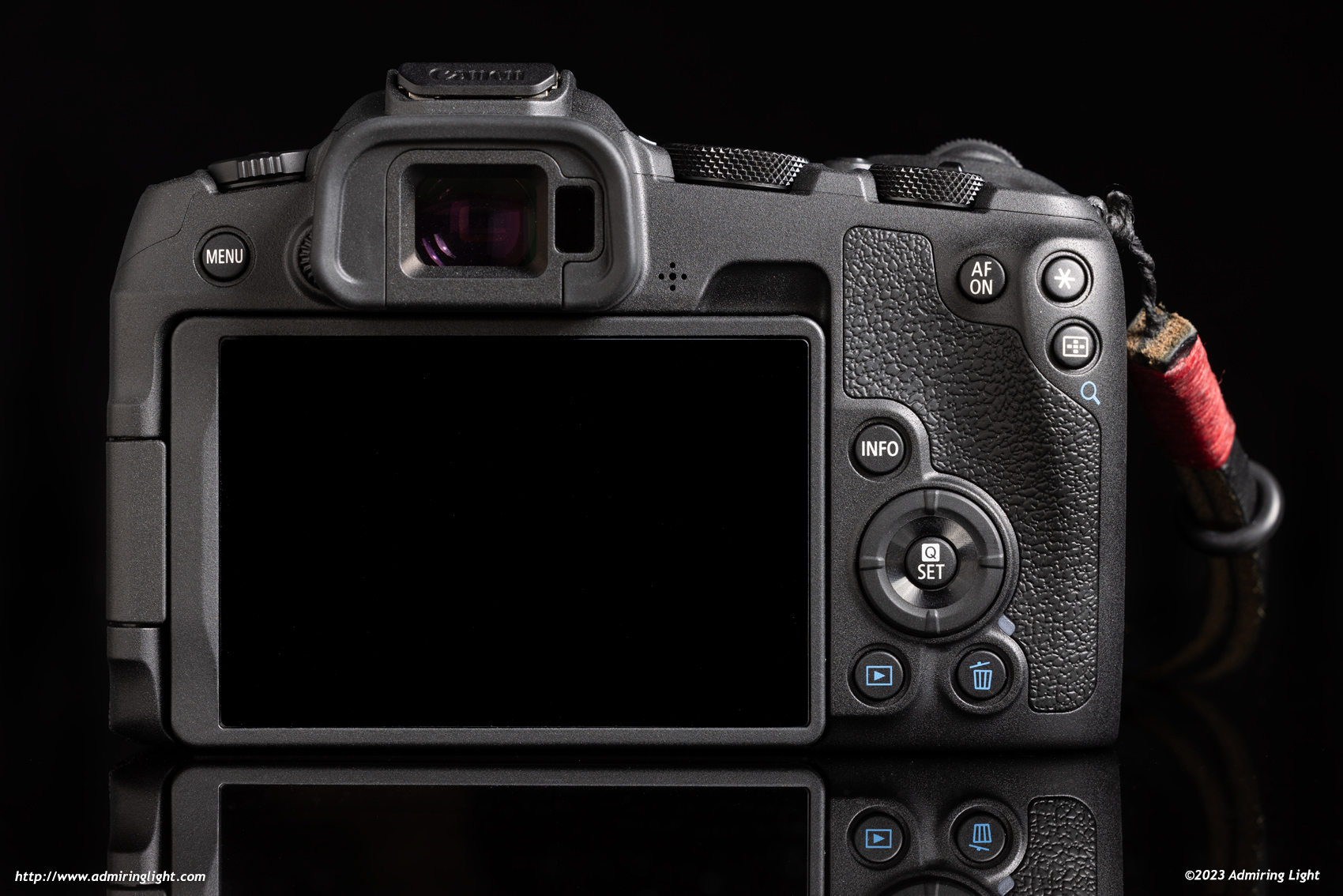
There is also some real power available with some of the customization options. For instance, for typical shooting, I have the camera set to One Shot Autofocus, with spot point, with subject and eye detection turned off. This allows me to pinpoint where I want focus at any time. However, I also have the AF-On button set to start metering and autofocus, and that can be customized to whatever settings you want. As such, I have it set to do ServoAF with wide area focusing, and auto subject and eye detection. With it set up this way, I can switch between single spot autofocus and wide area tracking autofocus with eye detection without having to change a single setting…I just press a different button. As you can see, the R8 is extremely customizable, and allows you to fine-tune the controls to your liking.
While the customization possibilities make the R8 feel closer to the R6 II than to the RP, the lack of a rear dial and a focus joystick are notable omissions. Moving the focus point without the joystick isn’t quite as quick and seamless as with one, but the R8 does give you options for that control. First, you can use the touchscreen to either tap on the back to set a point, or when using the EVF, you can use the screen as a touchpad to slide the focus point around with your thumb. Second, setting the D-pad to direct focus point control makes moving focus points around nearly as fast as with a joystick. I do miss the rear dial, but setting the lens control ring on RF lenses to control ISO has made even that loss bearable.
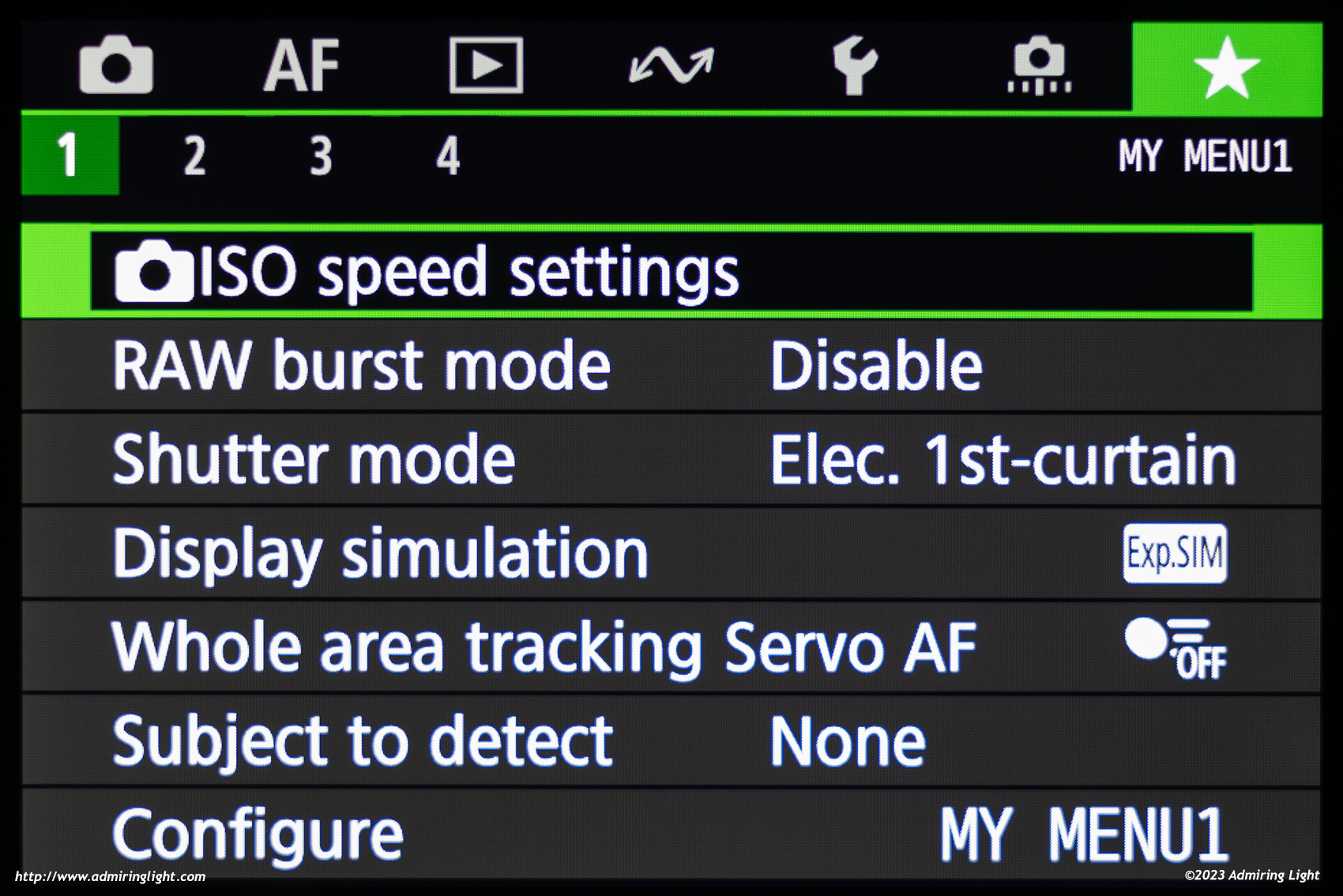
The menu system is laid out very well, which is typical for Canon, with tabs for grouping similar items. The menu can be fully navigated by touch as well as the d-pad or the front and rear control dials. Like the higher end Canon bodies, the R8’s menu has an absolute load of items, with 10 pages of camera settings for shooting and image quality, 6 pages for autofocus, 4 pages for playback, 2 pages for wireless connectivity, 5 pages of camera settings, and 5 pages of custom functions. And that’s just for stills. The menus change when you switch into video mode.
That’s a lot of functions, and while everything is very well organized, it can be tricky to remember where a specific setting is. Thankfully, like most manufacturers these days, Canon offers a customizable menu that can be populated with the settings most important to you. Up to 5 pages with 6 items each can be added to your ‘MyMenu’. You can also set the camera to directly open to the MyMenu tab every time, or to open to the last selected menu section.
Overall, the controls are well laid-out, and provide a healthy dose of control points for a mid-range body. The extensive customization options also add to the functionality, and make the R8 a very nice camera to operate in the field.


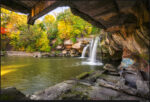

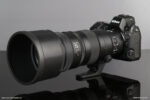
Leave a Reply